THE RISK OF ASTERISKS: THERE’S MORE TO THE STORY THAN JUST A BLOTCH IN THE RECORD BOOK
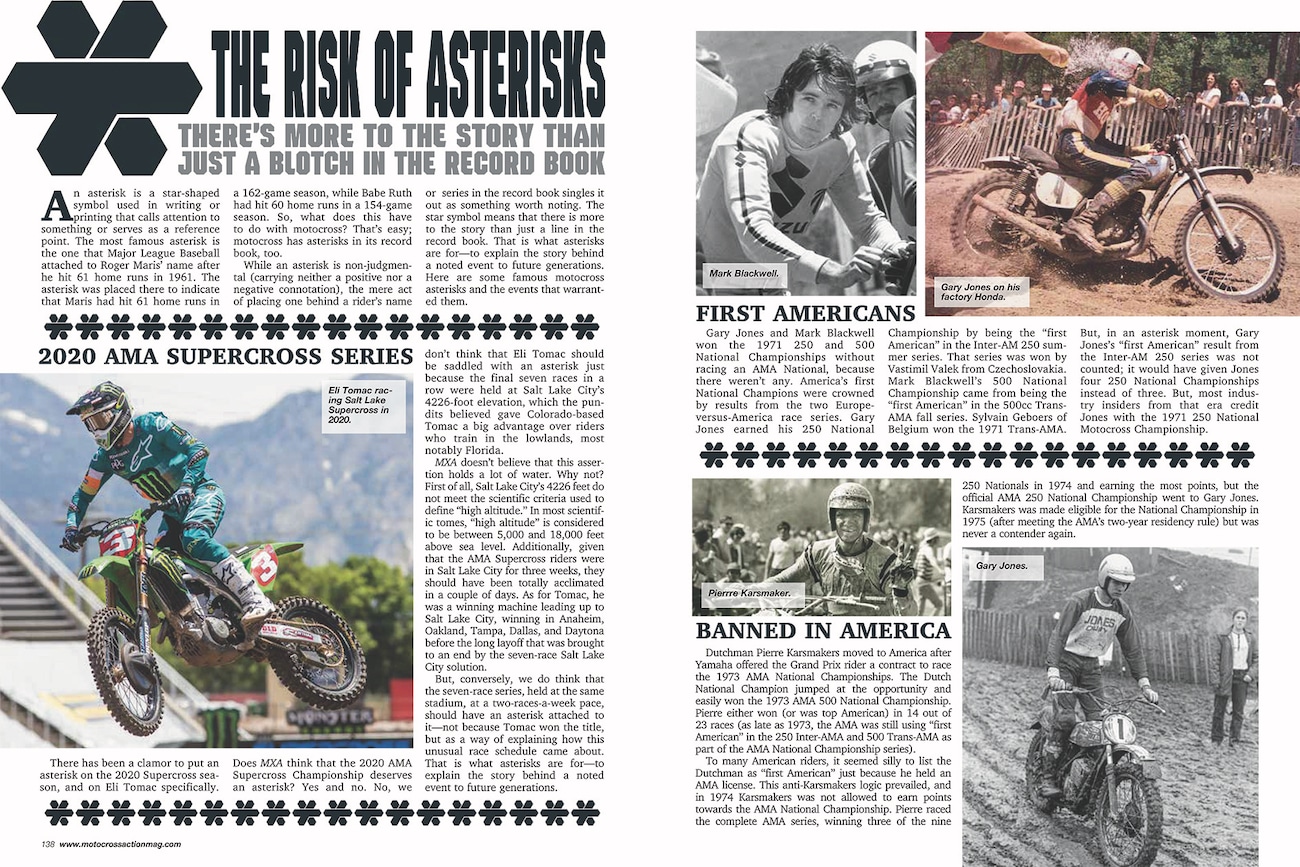 An asterisk is a star-shaped symbol used in writing or printing that calls attention to something or serves as a reference point. The most famous asterisk is the one that Major League Baseball attached to Roger Maris’ name after he hit 61 home runs in 1961. The asterisk was placed there to indicate that Maris had hit 61 home runs in a 162-game season, while Babe Ruth had hit 60 home runs in a 154-game season. So, what does this have to do with motocross? That’s easy; motocross has asterisks in its record book, too.
An asterisk is a star-shaped symbol used in writing or printing that calls attention to something or serves as a reference point. The most famous asterisk is the one that Major League Baseball attached to Roger Maris’ name after he hit 61 home runs in 1961. The asterisk was placed there to indicate that Maris had hit 61 home runs in a 162-game season, while Babe Ruth had hit 60 home runs in a 154-game season. So, what does this have to do with motocross? That’s easy; motocross has asterisks in its record book, too.
While an asterisk is non-judgmental (carrying neither a positive nor a negative connotation), the mere act of placing one behind a rider’s name or series in the record book singles it out as something worth noting. The star symbol means that there is more to the story than just a line in the record book. That is what asterisks are for—to explain the story behind a noted event to future generations. Here are some famous motocross asterisks and the events that warranted them.
 Eli Tomac racing Salt Lake Supercross in 2020.
Eli Tomac racing Salt Lake Supercross in 2020.
2020 AMA SUPERCROSS SERIES
There was a clamor to put an asterisk on the 2020 Supercross season, and on Eli Tomac specifically. Does MXA think that the 2020 AMA Supercross Championship deserves an asterisk? Yes and no. No, we don’t think that Eli Tomac should be saddled with an asterisk just because the final seven races in a row were held at Salt Lake City’s 4226-foot elevation‚ which the pundits believed gave Colorado-based Tomac a big advantage over riders who train in the lowlands‚ most notably Florida.
MXA doesn’t believe that this assertion holds a lot of water. Why not? First of all, Salt Lake City’s 4226 feet do not meet the scientific criteria used to define “high altitude.” In most scientific tomes, “high altitude” is considered to be between 5,000 and 18,000 feet above sea level. Additionally, given that the AMA Supercross riders were in Salt Lake City for three weeks, they should have been totally acclimated in a couple of days. As for Tomac, he was a winning machine leading up to Salt Lake City, winning in Anaheim, Oakland, Tampa, Dallas, and Daytona before the long layoff that was brought to an end by the seven-race Salt Lake City solution.
But, conversely, we do think that the seven-race series, held at the same stadium, at a two-races-a-week pace, should have an asterisk attached to it—not because Tomac won the title, but as a way of explaining how this unusual race schedule came about. That is what asterisks are for—to explain the story behind a noted event to future generations.
FIRST AMERICANS
 Gary Jones on his factory Honda.
Gary Jones on his factory Honda.
Gary Jones and Mark Blackwell won the 1971 250 and 500 National Championships without racing an AMA National‚ because there weren’t any. America’s first National Champions were crowned by results from the two Europe-versus-America race series. Gary Jones earned his 250 National Championship by being the “first American” in the Inter-AM 250 summer series. That series was won by Vastimil Valek from Czechoslovakia.
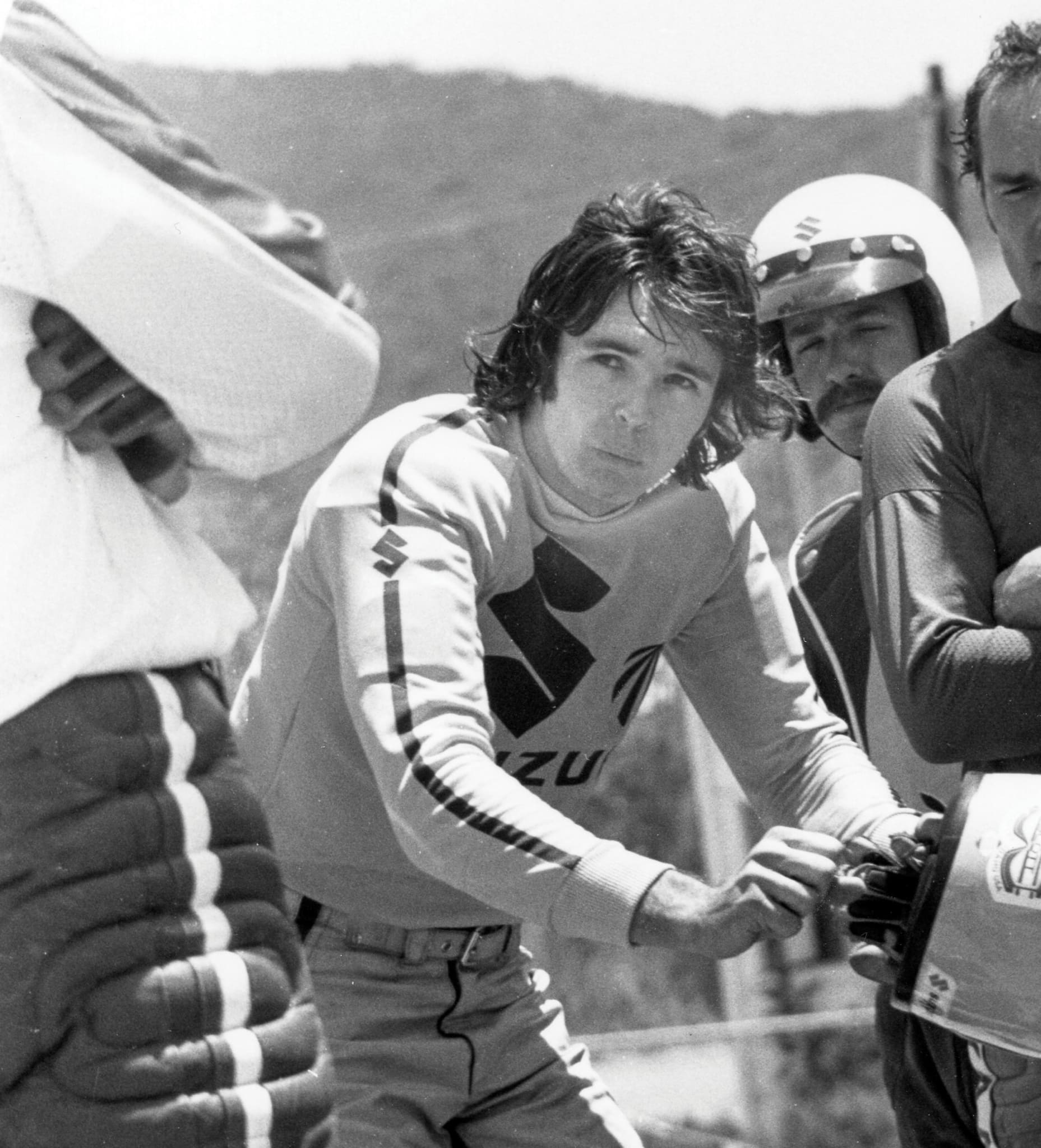 Mark Blackwell.
Mark Blackwell.
Mark Blackwell’s 500 National Championship came from being the “first American” in the 500cc Trans-AMA fall series. Sylvain Geboers of Belgium won the 1971 Trans-AMA. But, in an asterisk moment, Gary Jones’s “first American” result from the Inter-AM 250 series was not counted; it would have given Jones four 250 National Championships instead of three. But, most industry insiders from that era credit Jones with the 1971 250 National Motocross Championship.
BANNED IN AMERICA
 Pierre Karsmakers.
Pierre Karsmakers.
Dutchman Pierre Karsmakers moved to America after Yamaha offered the Grand Prix rider a contract to race the 1973 AMA National Championships. The Dutch National Champion jumped at the opportunity and easily won the 1973 AMA 500 National Championship. Pierre either won (or was top American) in 14 out of 23 races (as late as 1973, the AMA was still using “first American” in the 250 Inter-AMA and 500 Trans-AMA as part of the AMA National Championship series).
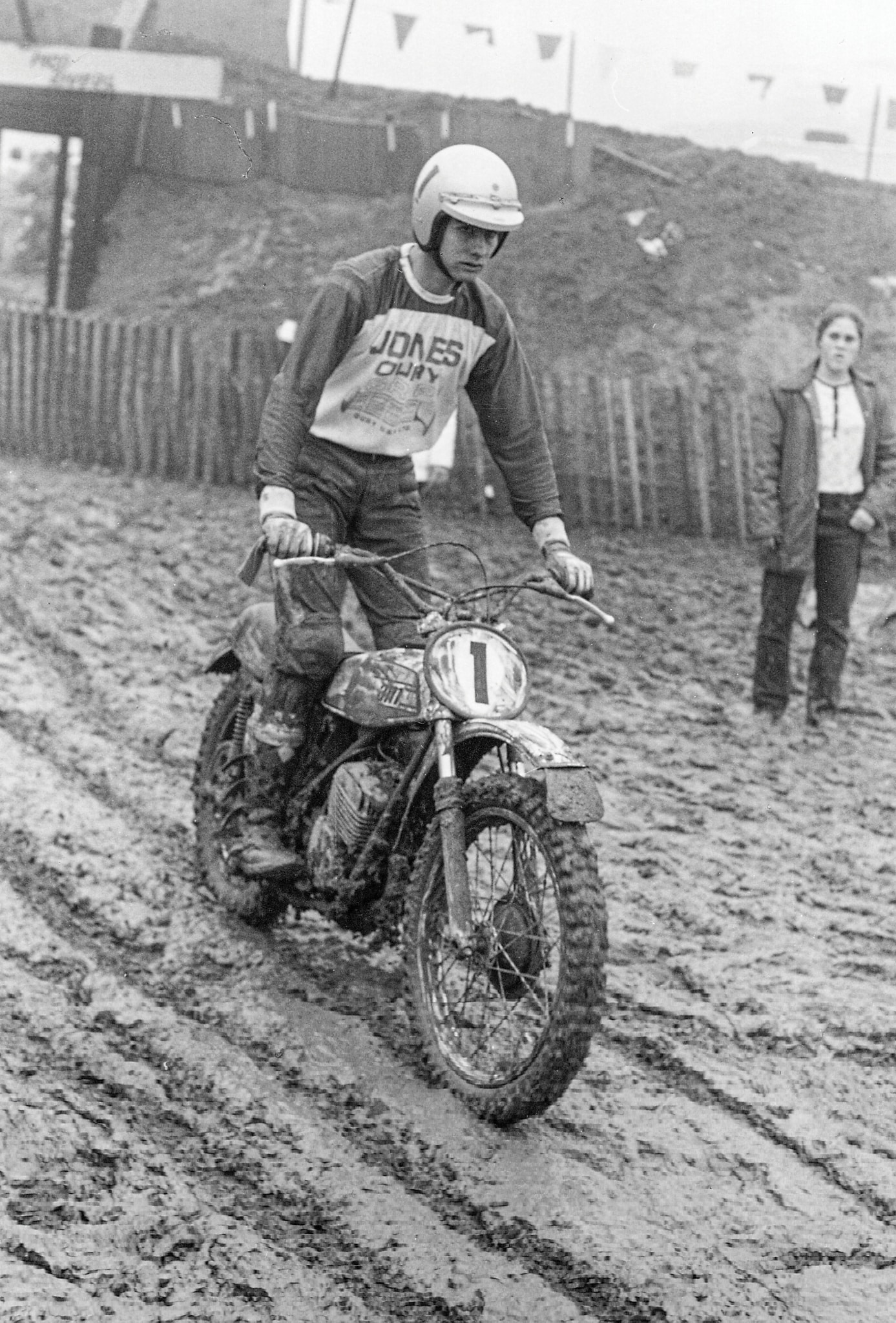 Gary Jones.
Gary Jones.
To many American riders, it seemed silly to list the Dutchman as “first American” just because he held an AMA license. This anti-Karsmakers logic prevailed, and in 1974 Karsmakers was not allowed to earn points towards the AMA National Championship. Pierre raced the complete AMA series, winning three of the nine 250 Nationals in 1974 and earning the most points, but the official AMA 250 National Championship went to Gary Jones. Karsmakers was made eligible for the National Championship in 1975 (after meeting the AMA’s two-year residency rule) but was never a contender again.
BIG-BORE SUPERCROSS CHAMPIONS
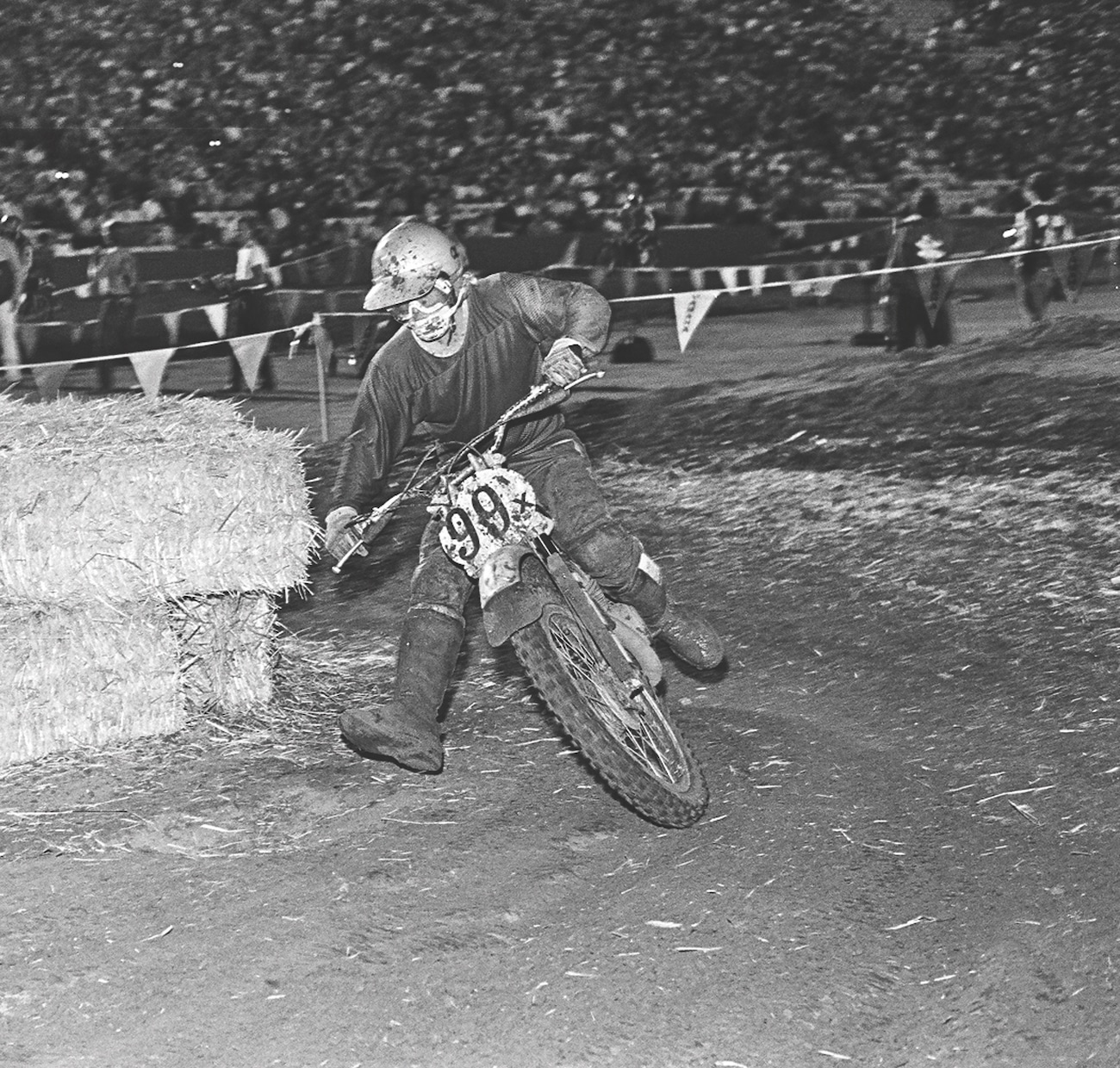 Bryar Holcomb.
Bryar Holcomb.
Since 1976, the Supercross Championship’s Premier class was for 250 two-strokes, and eventually 450cc four-strokes, but prior to that, the Supercross races also had a 500 class. There have only been two 500cc Supercross Champions‚ Gary Semics (Husqvarna) in 1974 and Steve Stackable (Maico) in 1975; however, a handful of riders won 500cc Supercross events (and each one earned an asterisk in the AMA record book). The big-bore winners were Mark Blackwell (1972 Daytona), Bryar Holcomb (1972 Los Angeles Coliseum), Pierre Karsmakers (1973 Daytona), Robert Plumb (1973 Los Angeles Coliseum), Roger DeCoster (1974 Daytona), Gary Semics (1974 Houston Astrodome), Steve Stackable (1975 Dallas & Daytona), and Tony DiStefano (1975 Houston Astrodome).
TITLE DECIDED IN A BOARDROOM
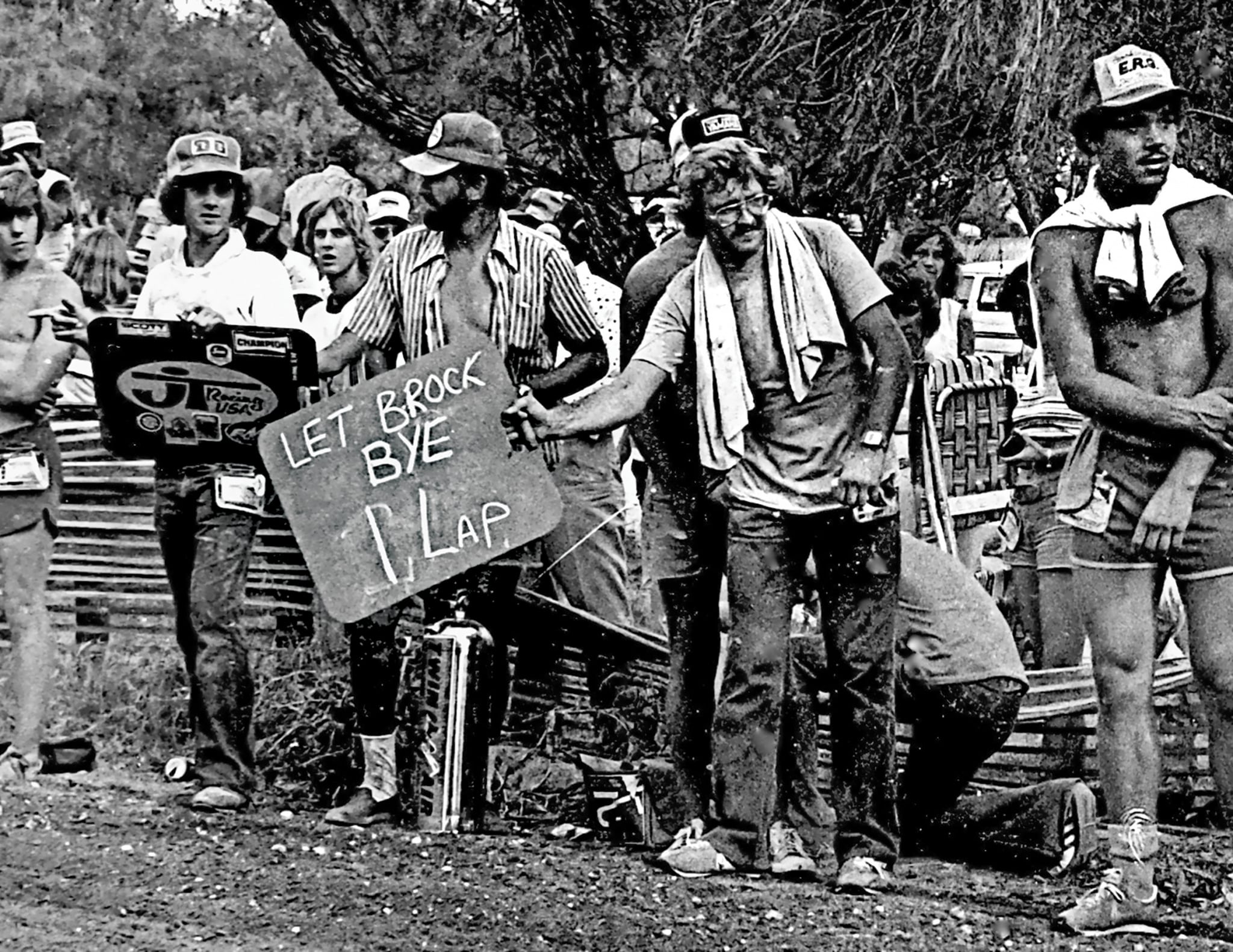
Visible in Jody’s famous photo are, Dave Osterman (JT pitboard), Don Westfall (beard), Keith McCarty and Leon Wolek (ERG/Gookinaide hat).
The most famous points tie in motocross occurred when Broc Glover and Danny LaPorte tied for the 1977 125 National Championship. Glover managed to earn enough points at the final 125 National to tie Team Suzuki’s LaPorte, but only after Broc’s Yamaha teammate Bob Hannah pulled over and let him by. The infamous “Let Broc Bye” race resulted in Broc and Danny each ending up with 240 points.
It was asserted that Team Yamaha’s pit signal for race leader Bob Hannah to pull over and let Glover by was tantamount to fixing the outcome of the race, which is strictly forbidden in the AMA rule book. The photo of the pit board was considered the smoking gun; however, in the AMA boardroom, the AMA officials declared that motocross was a “team sport.” Glover was awarded the 125 National Championship because he won two of the six races, while LaPorte only won one.
THE SUPERCROSS RUBBER MATCH
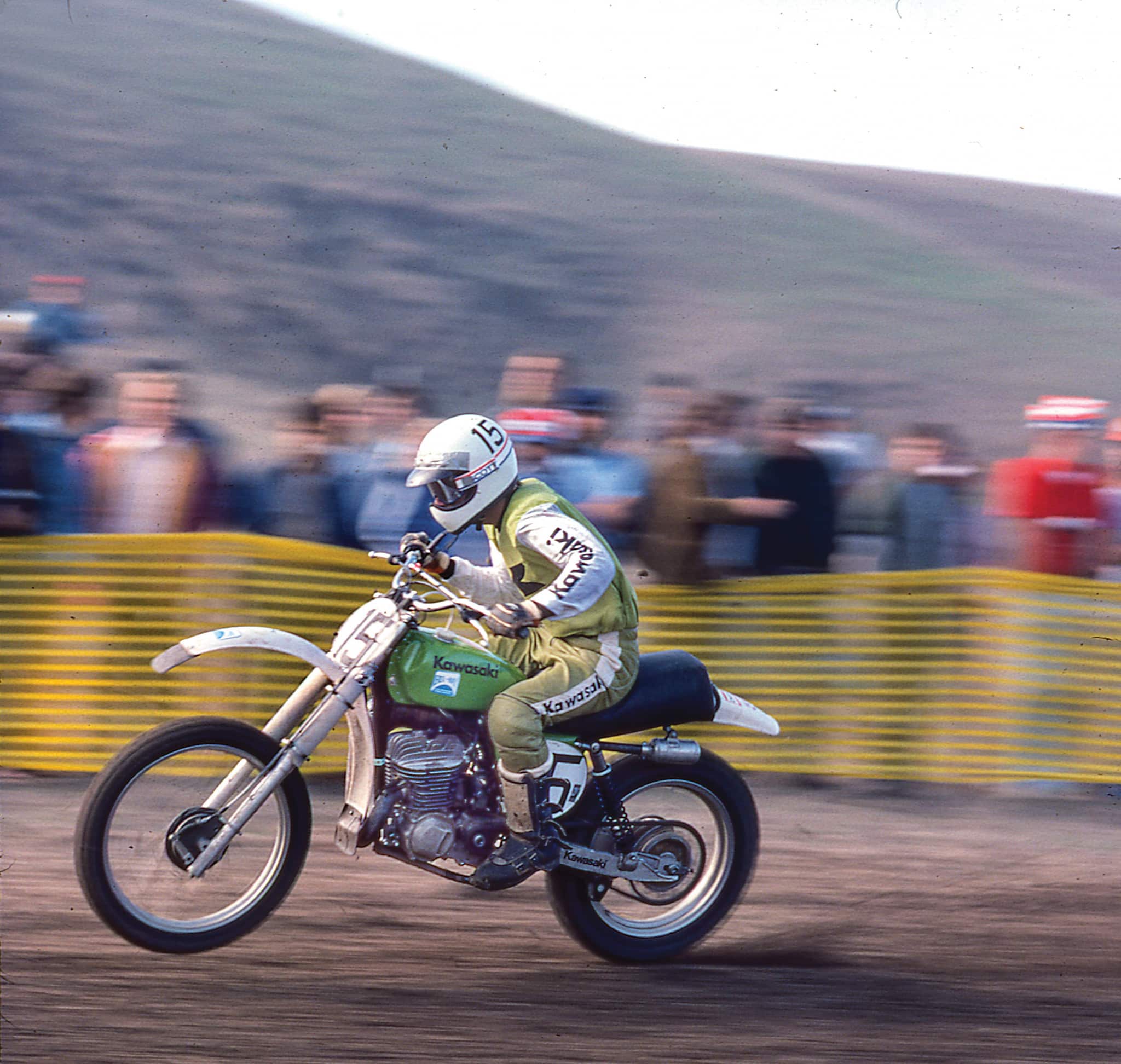 Gary Semics.
Gary Semics.
There has only been one tie for a premier Supercross Championship in AMA history (and it, too, involved the 500cc Supercross Championship). In 1974, Tim Hart and Gary Semics tied with 29 points each for the AMA 500cc Supercross crown. The series was only two races long (Daytona and Houston), and since Semics won a race and Hart didn’t, the Championship was awarded to Semics.
ROGER DECOSTER’S BRAVE EXPERIMENT
 Doug Henry won the one-moto format in oppressive heat.
Doug Henry won the one-moto format in oppressive heat.
Although there have been several AMA Motocross Nationals that have been called after one moto for rain, lightning or flooding (and got asterisks attached to them in the record book), there has only been a single AMA National that was designed and formatted to test the idea of a one-moto race schedule for the future. In 1993, the AMA allowed Glen Helen National promoter Roger DeCoster to experiment with a one-moto format. Instead of two motos, the riders would use a Supercross-style bracket system of heats, semis, and main events for the 125 and 250 classes.
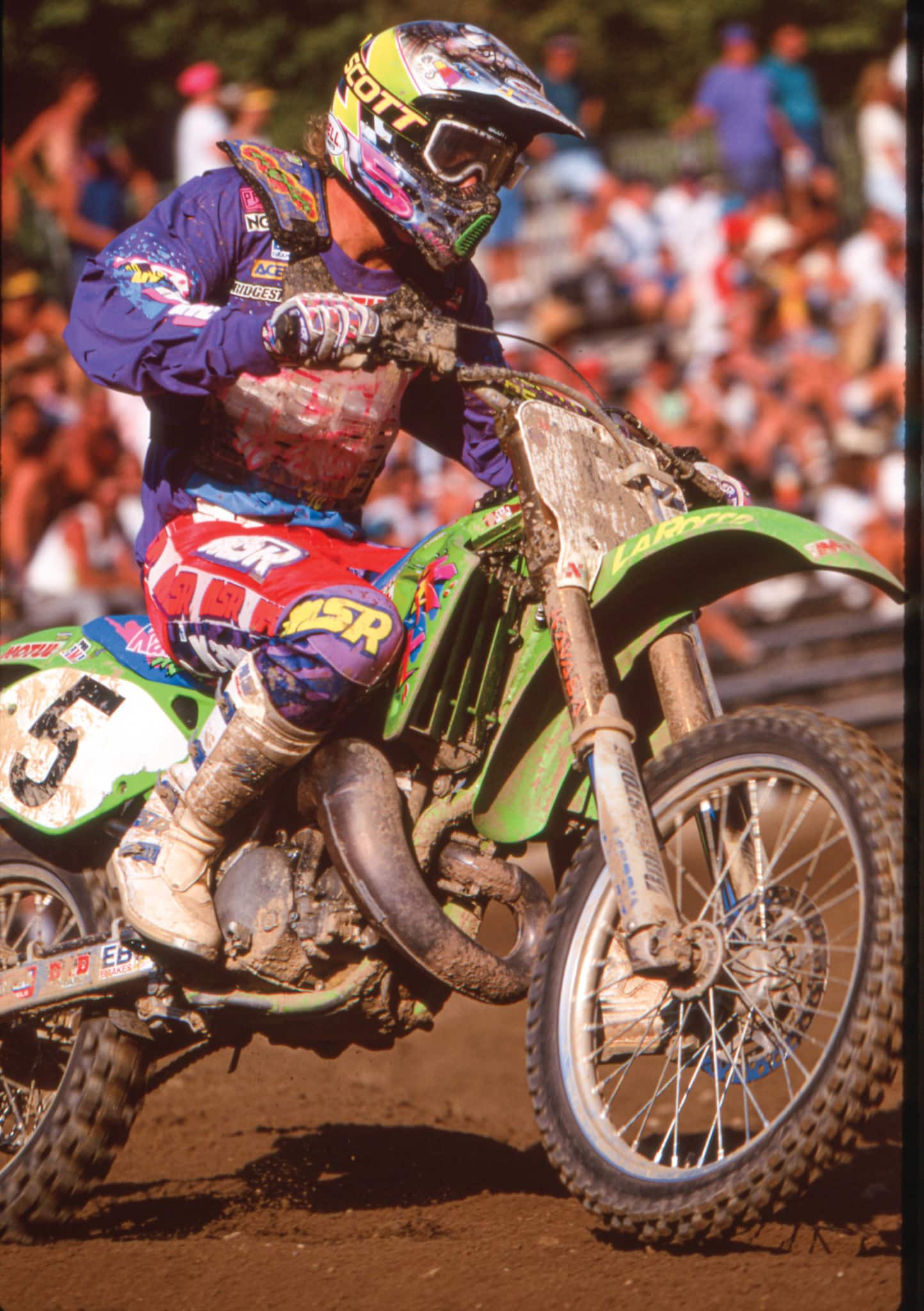 Mike LaRocco racing Glen Helen in 1993.
Mike LaRocco racing Glen Helen in 1993.
The temperature in August at Glen Helen in 1993 was 110 degrees. Mike LaRocco (250) and Doug Henry (125) proved to be the fittest in their respective motos. After the race, the AMA declared the one-moto format a failure, even though if the race had been held with a two-moto format, there was little chance that many riders would have been able to survive the second 40-minute-plus-two-lap moto on the hottest day ever in motocross history. An asterisk was put into the record books to signify that this was a one-moto event.
MAGOO’S UNBREAKABLE RECORD
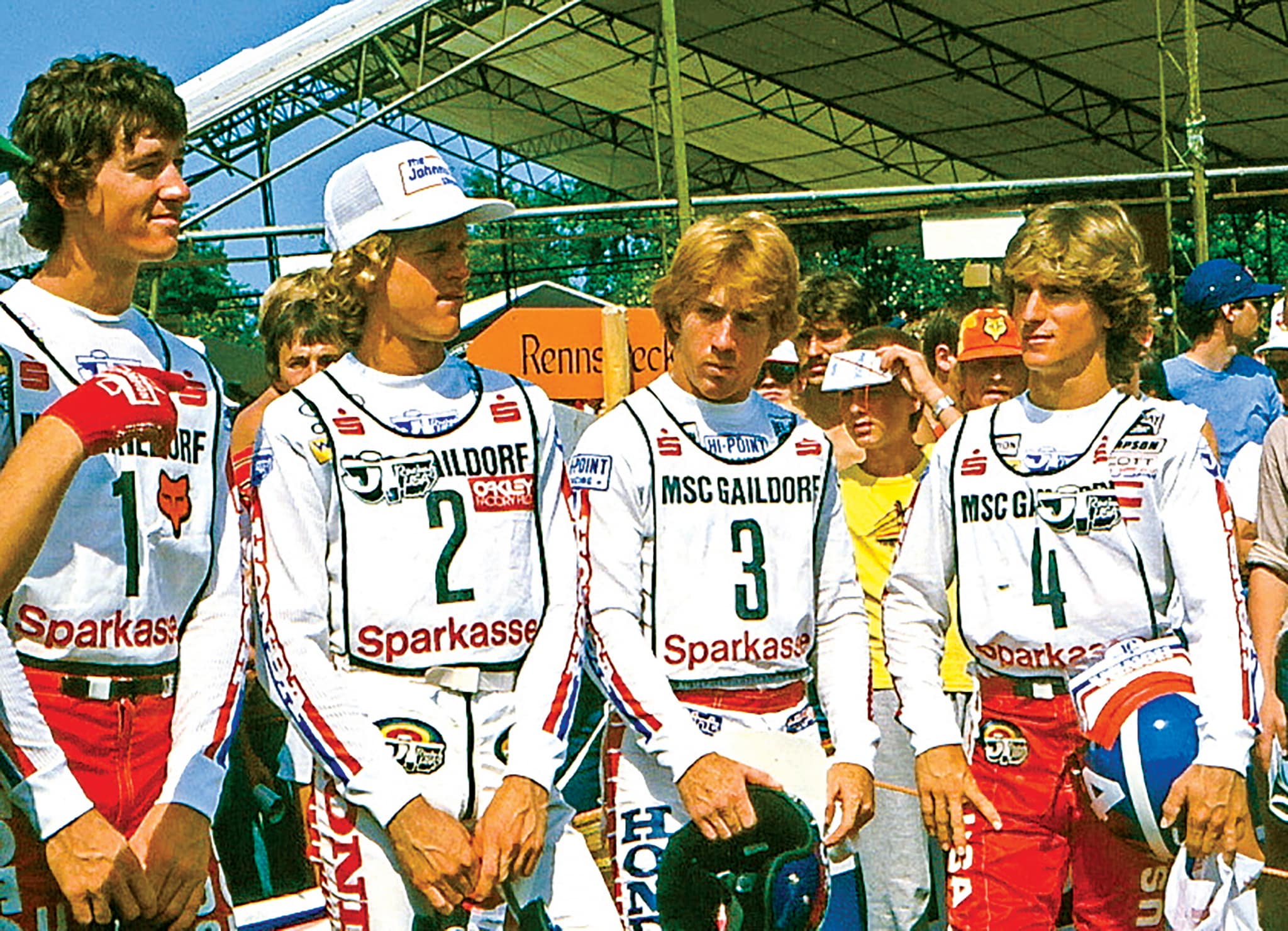 David Bailey, Johnny O’Mara, Danny “Magoo” Chandler and Jim Gibson at the 1982 MXDN.
David Bailey, Johnny O’Mara, Danny “Magoo” Chandler and Jim Gibson at the 1982 MXDN.
At the 1982 Motocross and Trophee des Nations, Danny “Magoo” Chandler became the only rider in the history of the World Team Championships to win all four motos. It is a record that will never be broken (because the 250cc Trophee des Nations was dropped the next year).
RODIL CUP SANDBAGGING
 David Bailey and Rick Johnson battling in 1984.
David Bailey and Rick Johnson battling in 1984.
Perhaps the strangest Supercross race in AMA history was the November 3, 1984, Rodil Cup race at the Los Angeles Coliseum. Billed as a “Europe versus America” event, and a points-paying event for the short-lived FIM Rodil World Supercross Championship, the format called for the heat winners to start in an inverted second row. The two-row start idea was to give the neophyte European riders a chance. Instead, the American riders sandbagged the heat races. David Bailey even stopped behind the Peristyle while leading to ensure that he would finish far enough back to get a front-row start. Ricky Johnson refused to sandbag, bad-mouthed the other riders as “cheaters” and said he would win from the second row. He didn’t! Jeff Ward, who had sandbagged in his heat, won the main event. The fans booed the sandbaggers and cheered RJ.
STACKING THE 250 DECK
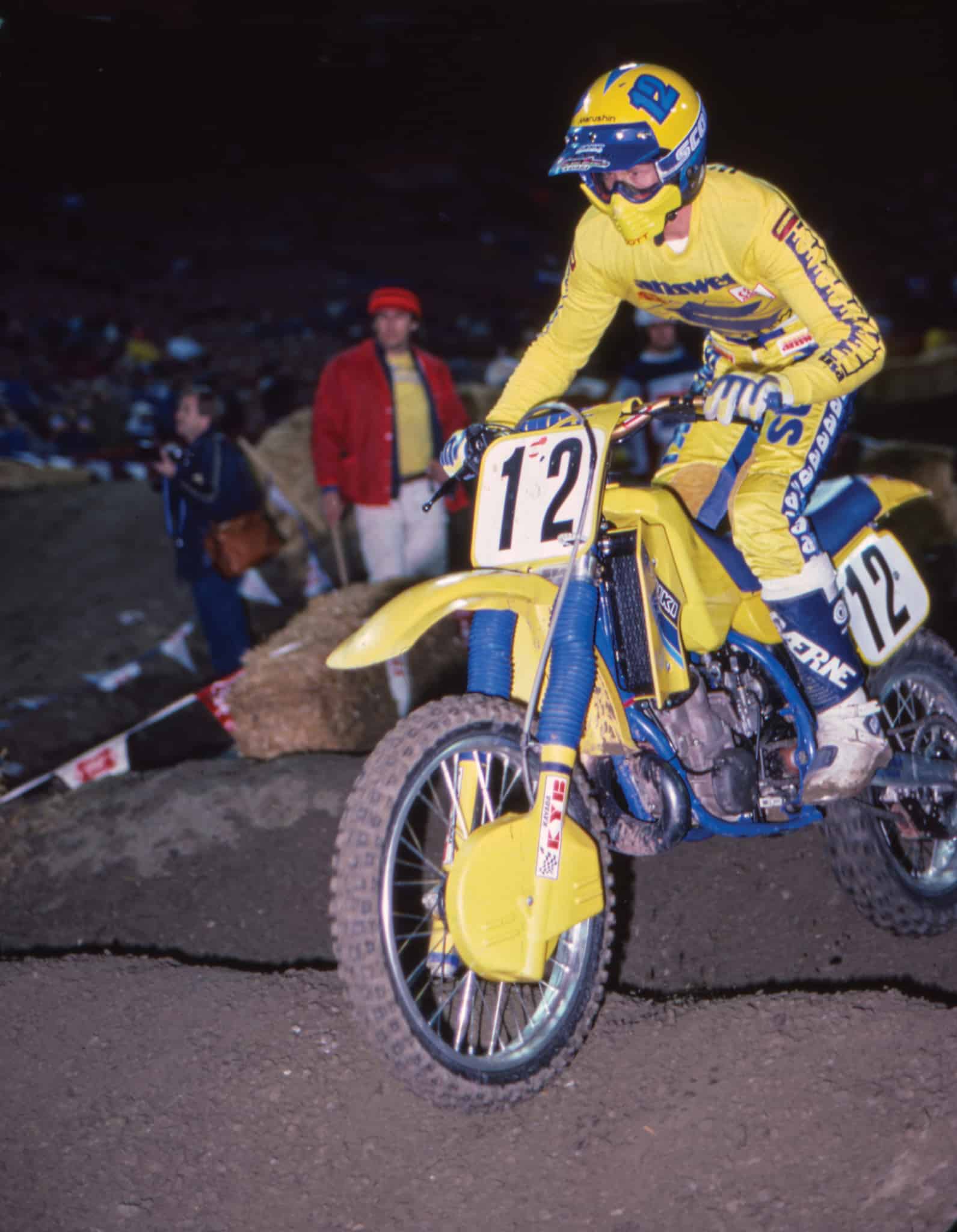 A.J. Whiting.
A.J. Whiting.
In 1985, the AMA National format called for all three classes (125, 250 and 500) to be run on the same day. The final National of the year was at Washougal, Washington. Going into Washougal, Ron Lechien (Kaw) had already locked up the 125 National Championship and Broc Glover (Yam) had clinched the 500 National Championship, but the 250 National Championship was still a knock-down duel between Jeff Ward (Kaw), Johnny O’Mara (Hon) and Rick Johnson (Yam). To pack the 250 field, the factory teams pulled all of their riders out of the 125 and 500 classes and put them into the 250 class (in an effort to help their teammates win the 250 title). In the end, Johnny O’Mara won Washougal, but Jeff Ward finished high enough to win the 1985 250 National Championship. The big surprise of the day was that privateers Eric Eaton (500) and A.J. Whiting (125) won the only Nationals in their careers that day. This was the first and only time that two privateers won Nationals on the same day.
TORTELLI’S AMA DEBUT
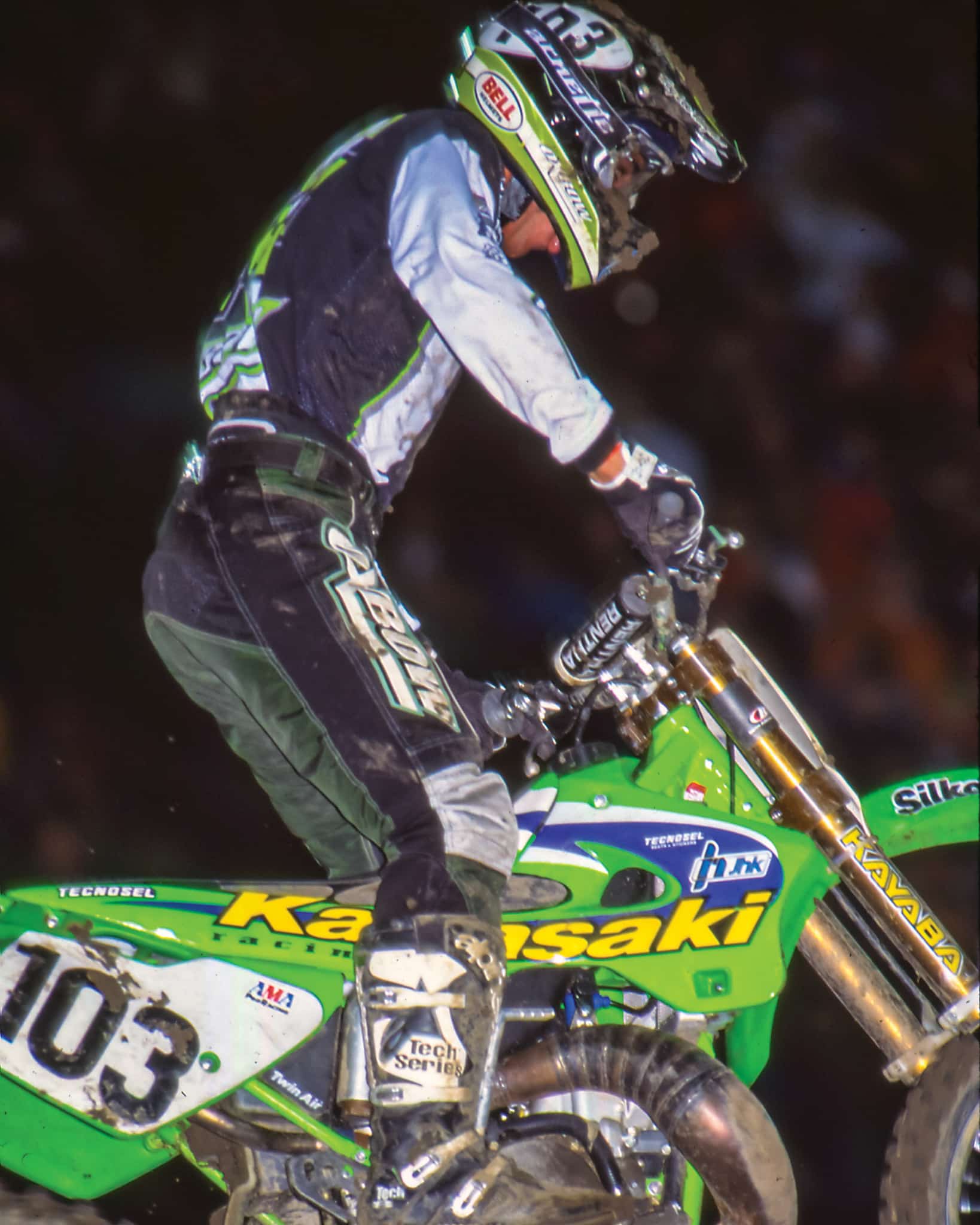 Sebastien Tortelli.
Sebastien Tortelli.
When Sebastien Tortelli first flew from France to race the 1996 125 Supercross series, the AMA had a surprise for him. When Tortelli arrived, they told him that he could not ride the 125 class because he had finished in the top five in the 125 World Championships in 1995. Tortelli had to borrow a 250 to get in a few Supercross races. Tortelli gets an asterisk behind his name for being the first rider affected by the anti-Pichonrule except for two things: (1) Pichon never made the top five in the 125 World Championships (his highest finish was sixth), and (2) there is no such rule in the AMA rule book. Sebastien Tortelli was wronged.
1984 SUPERCROSS WARS
 Johnny O’Mara, Jeff Ward and Rick Johnson on the podium together in 1984.
Johnny O’Mara, Jeff Ward and Rick Johnson on the podium together in 1984.
In 1984, the AMA and the Supercross promoters feuded over who was in control of the series. In the end, the two parties broke apart, and the AMA held a short two-race 1984 Supercross series with races at Daytona and Talladega. Jeff Ward was declared the official 1984 AMA Supercross Champion over David Bailey. The Supercross promoters formed their own sanctioning body, called Insport, that former Team Kawasaki manager Gary Mathers was named to head. Insport held 15 rounds without an AMA or FIM sanction. As the 1984 season came close to its end, with Jeff Ward being named the AMA Supercross Champion and Johnny O’Mara the Insport Supercross Champion, the organizations kissed and made up, and for the good of the record book, Johnny O’Mara was declared the official 1984 Supercross Champion and an asterisk was attached to Jeff Ward’s AMA title.
1984 AMA SUPERCROSS SERIES TOP 10
1. Jeff Ward…Kaw
2. David Bailey…Hon
3. Mark Barnett…Suz
4. Scott Burrnworth…Suz
5. Billy Liles…Kaw
6. Johnny O’Mara…Hon
7. Jeff Hicks…Hon
8. Rick Johnson…Yam
9. Clint Hardick…Hon
10. Rodney Smith…Yam
1984 INSPORT SUPERCROSS SERIES TOP 10
1. Johnny O’Mara…Hon
2. Ricky Johnson…Yam
3. David Bailey…Hon
4. Jeff Ward…Kaw
5. Ron Lechien…Hon
6. Broc Glover…Yam
7. Mark Barnett…Suz
8. Alan King…Kaw
9. Billy Liles…Kaw
10. Goat Breker…Kaw





Comments are closed.